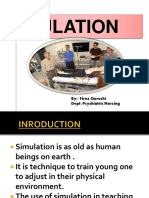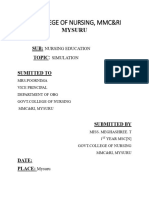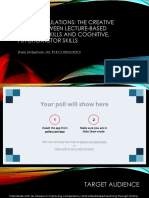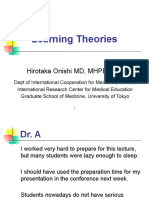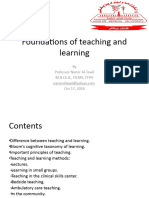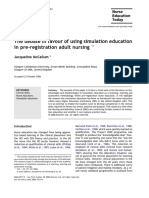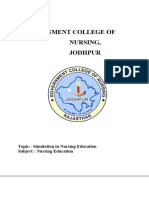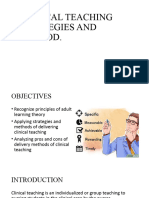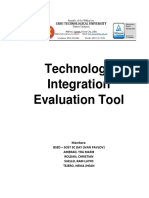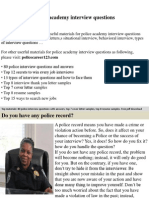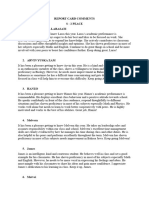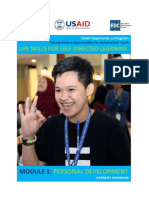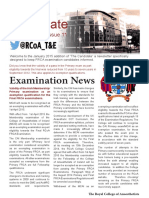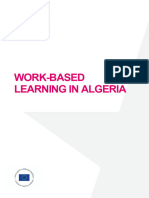0% found this document useful (0 votes)
25 views68 pagesLab & Simulation
The document discusses the teaching of skills through lab and simulation methods, outlining their definitions, phases, merits, and demerits. It emphasizes the importance of hands-on experience in nursing education and the role of teachers in facilitating learning. Additionally, it highlights the effectiveness of simulation in improving nursing skills and patient outcomes.
Uploaded by
chadaramsantoshsoumyaCopyright
© © All Rights Reserved
We take content rights seriously. If you suspect this is your content, claim it here.
Available Formats
Download as PPTX, PDF, TXT or read online on Scribd
0% found this document useful (0 votes)
25 views68 pagesLab & Simulation
The document discusses the teaching of skills through lab and simulation methods, outlining their definitions, phases, merits, and demerits. It emphasizes the importance of hands-on experience in nursing education and the role of teachers in facilitating learning. Additionally, it highlights the effectiveness of simulation in improving nursing skills and patient outcomes.
Uploaded by
chadaramsantoshsoumyaCopyright
© © All Rights Reserved
We take content rights seriously. If you suspect this is your content, claim it here.
Available Formats
Download as PPTX, PDF, TXT or read online on Scribd
/ 68


